#media: strange new worlds
Text
Am I the only one who finds new content for old sci-fi media uncanny? Especially in the case of Star Trek, where these new series and movies display brighter environments and sleeker, more advanced technology than series that take place later have.
Like we have Strange New Worlds, but all the characters are dressed in these modernized outfits, most of the consoles are touch screens, and everywhere is brightly lit. Compare that to TOS's pilot with Captain Pike, where the tech feels more analog because that looked sci-fi in the 60s. There was a charm to the old stinkiness.
It feels so disjointed, because most the other series have built off each other. Technology and fashion advanced from TOS to TNG and onward.
I understand our ability to depict these settings cheaply has improved over time, so this is just a reimagining of old things the show didn't have the budget or ability to show well. I'm also not saying SNW is bad, it just feels uncanny to me.
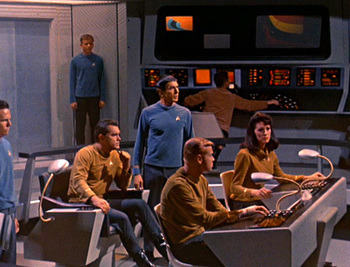
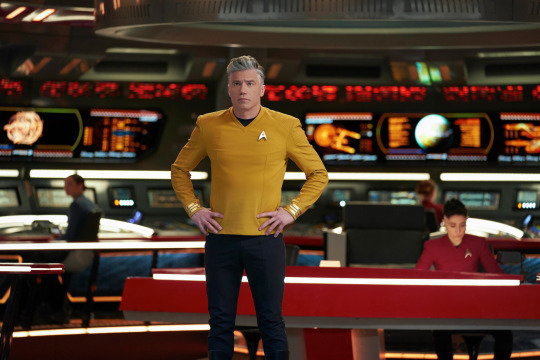

#am i just being a media boomer#star trek#star trek the original series#star trek strange new worlds#new technology#the effects are better#i just don't like them
97 notes
·
View notes
Text
Friendly reminder that it's not biphobia to feel like a show isn't doing enough with a character's queerness. Especially if it was only mentioned once before the character was put in a heteronormative ship
#yes this is about Strange New Worlds#yes this is about Christine Chapel#seriously though. stop making women bisexual for diversity points and then only making them be interested in cis white dudes#it's bullshit#there is a GENUINE lack of sapphic rep in media and people always use the bisexual woman with a boyfriend as proof that there IS good rep#when can we admit that that ISN'T enough????#shut up tessa
57 notes
·
View notes
Text
An essay I wrote for school on Strange New Worlds' problems with ableism, complete with bibliography:
Star Trek: Strange New Worlds has numerous problems, from its retooling of the Gorn into knockoff xenomorphs to its erasure of Spock’s Jewish roots to its overreliance on nostalgia, but its most glaring flaw is its painful undercurrent of ableism. The conflation of disability with death, the ignorance and tacit pardoning of eugenics, and the disposal of multiple disabled characters come together to weave a harmful and ignorant pattern in the show’s writing.
Christopher Pike’s character in Strange New Worlds is defined by disability. The dilemma he wrestles with in almost every episode is the looming specter of his future disability, which was revealed to him via time crystal in season two of Star Trek: Discovery. In the twelfth episode of season two, “Through The Valley of Shadows”, Pike must harvest a time crystal in order to send the life’s story of a dead alien to the future to protect it from an evil artificial intelligence intent on destroying all life in the galaxy. When Pike touches the crystal, he sees visions of his future, in which he is caught in a deadly radioactive explosion and left with severe burns and full body paralysis, able to move and communicate only through a specialized wheelchair. “The sequence ends with a final linked pair of nightmarish shots, a centred close-up of the older Pike’s face beginning to melt as he screams matched with the younger Pike’s own horrified scream as he falls backward into the present moment,” (Muredda, Angelo). As Muredda says later in the same article, this portrayal imagines disability as “a terminal point, something to scream about in terror, and the embodied sign of no liveable future at all.” The depiction of disability as a horrifying fate, and of the disabled body as an object of disgust and/or fear has a long history in the genres of horror and science fiction; previous and current Star Trek series are not immune to this. The Borg Queen, who appeared most recently in Picard, is missing most of her lower body and uses a robotic replacement to walk— her prosthetic spine is used as an object of horror and disgust when she first appears in First Contact (1996).
While Strange New Worlds had the opportunity to break this pattern and defy ableist stereotypes with Pike, they chose instead to follow the path Discovery had laid for them. Despite the fact that it is made very clear that Pike will be disabled, not killed, by the explosion he will be caught in in the future, every character within the narrative speaks of Pike’s fate as if he is going to die. Pike says, less than twenty minutes into the pilot: “I know how and when my life will end.” This writing decision mirrors the real-life belief that disabled peoples’ lives are akin to “a fate worse than death” or “not worth living,” a sentiment which has led to real deaths: “. . . [early in the pandemic] this belief — that we’re just surviving, not living, and thus have limited quality of life — lead to forced DNRs being put in the files of disabled people in the UK and lead directly to the death of a disabled man, Michael Hickson,” (Lloyd, Kelas). Hickson was denied treatment for pneumonia in Austin, Texas due to his doctor’s perception that he “didn’t have much of a quality of life.” He was put in hospice against his family’s wishes and died at the age of 46. (Shapiro, Joseph). For Strange New Worlds to equate Pike’s disability to the end of his life is irresponsible and reinforces the cultural biases that led to the death of Hickson and continue to impact the quality of treatment disabled people receive the world over.
Christopher Pike’s initial appearance in the original series episode “The Menagerie” was actually very progressive for the time; despite the limited communication of the blinking-light system in his wheelchair and his ending being living out the last of his life in a virtual reality where he could walk again, he was still a disabled person on television in a position of power.
When Pike first appeared, the Ugly Laws were still in place in much of the United States. Someone visibly disfigured/disabled was not to be seen in public spaces, at the risk of fines or jail . . . Captain Pike’s appearance in The Original Series was revolutionary. Here was not just a visibly disabled person, but they were someone Spock respected and cared about enough to risk his career for. [Disabled people] didn’t have a great existence, but they had one, and Pike was still valued as a person. (Lloyd, Kelas).
It would have been quite easy for the writers to modernize Pike’s portrayal to further disability representation in the way Pike first did: @hard-times-paramore has written an alternate ending (a mixed media series titled “The Captain’s Chair”) for Strange New Worlds in which Pike goes on to captain a new starship after becoming disabled, assisted by an interpreter, a caretaker, and futuristic medical technology. This alternate ending carries the message that disabled people are still people, who can and should be allowed a place in science fiction, as opposed to the current message sent by SNW, which is that significant disability is akin to a death sentence, even in a fantastical future.
However, there is more to Strange New Worlds’ portrayal of disability than just Captain Pike. The show is also very preoccupied with genetic augmentation and the Federation’s attitude toward it. While this is far from unique among Star Trek media, unlike other Trek properties which have covered this topic (Doctor Bashir, I Presume?, Chrysalis, Space Seed, Affliction/Divergence, etc) Strange New Worlds does not acknowledge the real-life equivalent to science fiction genetic augmentation: eugenics. SNW portrays genetic augmentation as a neutral practice targeted unjustly by the Federation because of outdated prejudices, with no examination of what genetic augmentation is a stand-in for. While the original series (in “Space Seed”) first introduced the Federation’s ban on genetic augmentation as a justified protective measure against the breeding of warlike “superior ambition” among men of “superior ability,” Strange New Worlds portrays genetic augmentation as an unjustly discriminated-against trait whose origin and consequences mean little to nothing.
Strange New Worlds’ main conduit for their genetic augmentation plotlines is Una Chin-Riley, the first officer of the Enterprise. She is a member of an alien species called Illyrians, who genetically modify themselves to suit the environments of planets they colonize. She herself was genetically modified as a baby, and is thus legally barred from joining Starfleet— however, she lied on her application to Starfleet Academy to get in. The plots revolving around her concern her arrest for violating Federation law and the subsequent trial, which is used as an extended metaphor for discrimination against, and the fight for civil rights for, marginalized groups. “Ad Astra Per Aspera,” the episode covering Una’s trial, is intentionally vague with its metaphor, to the point that just about any marginalized group could be represented by it. This episode is, on its face, fine. It argues against discrimination through allegory quite adeptly, discussing the concept of “passing” as part of a non-oppressed group and broaching the topic of systemic oppression. However, it has one glaring flaw in its base: the stand-in it chose for real-life oppression. Genetic modification, unlike other fantastical attributes that can be used to metaphorize oppression, has a bloody real-life history involving the deaths and sterilizations of millions of people. Strange New Worlds, however, appears ignorant of this fact: not once does the topic of eugenics come up in any of their episodes about genetic augmentation. Not once does the topic of disability come up, either. This is either an unwillingness to engage with the realities of what those who seek to change humanity’s genes have done and continue to do, a grave oversight, or mere ignorance. Whichever one it is, this omission of eugenics from the narrative of genetic augmentation is one that cannot be ignored. Its omission reads as a tacit endorsement of genetic augmentation at times, such as when Una and La’An say, in “Ghosts of Illyria”:
LA’AN: All my life I've hated augments. Hated what people thought of me because I was related to them. Understanding why they were outlawed in the Federation. The damage they did. They almost destroyed Earth.
UNA: [. . .] My people were never motivated by domination. Illyrians seek collaboration with nature. By bioengineering our bodies, we adapt to naturally-existing habitats. Instead of terraforming planets, we modify ourselves. And there's nothing wrong with that.
By ignoring the part eugenics plays in Star Trek’s portrayal of augmentation, and instead portraying the issue as a matter of prejudice based off of the fictional event of the Eugenics Wars— when augmented “supermen” became dictators and killed millions in conquest and war— Strange New Worlds completely fails to examine the real-life implications of their metaphor.
What makes this episode’s flaws worse is that another Star Trek series already portrayed the potential expulsion of a genetically augmented person from Starfleet, handling it with better understanding of the eugenic undertones of genetic augmentation, and it did so in 1997. In the season five episode of Deep Space Nine, “Doctor Bashir, I Presume?”, it is revealed that Julian Bashir, chief medical officer of Deep Space Nine, was illegally genetically modified by his parents as a small child and is in danger of being thrown out of Starfleet because of this revelation. Throughout the course of the episode, the audience learns that Bashir’s parents chose to modify him because he was intellectually disabled as a child. His mother believed that his life would be better if he were “normal,” while his father wanted a successful son and believed that intellectual disability was inimical to that end. The episode expresses, through Julian’s anger at his parents, that modifying a person to rid them of perceived “undesirable traits” is wrong, but that it is also wrong to unilaterally bar people from Starfleet based on a decision that was made for them by eugenicist parents. This message is far more clear than “Ad Astra Per Aspera”’s, especially on the subject of disability and eugenics. Strange New Worlds’ complete neutrality on and/or tacit approval of genetic augmentation/eugenics, in contrast to Deep Space Nine’s nuanced examination of the topic, is glaring.
The specific problem with Strange New Worlds’ neutrality on genetic modification is that for a species to be changed on a genetic level for any reason, traits must be eliminated. In a science fiction setting, this can be accomplished by simply changing the genetic structure of a consenting adult with a futuristic medical tool, rather than through violence as in our reality, but this, too, presents ethical problems. What is considered a problem to be cured? Who makes that decision? What happens to those who don’t want something modified out of them? What happens to any children they may have? Who gets to have control over technology with the power to eliminate or introduce genetic traits at will? What place do disabled people have in a society built off of achieving peak physical performance in a given environment? Strange New Worlds attempts to answer none of these questions. It acknowledges none of them. And this silence leaves disabled people out of the conversation completely by not even considering them. Today, in Denmark and Iceland, almost 100% of fetuses with Down Syndrome are aborted; the law in Iceland even specifically states that abortion is permitted after 16 weeks only if the fetus has a “deformity,” which Down Syndrome is specified to count as. (Quinones, Julian; Lajka, Arijeta). An entire anti-vaccine movement was begun in Britain because parents were so afraid of having a child with autism and chronic digestive disease, a child like me, that they risked their children dying of measles. This is what real-life genetic engineering looks like, and Strange New Worlds has failed to acknowledge that. I, at least, consider that a failure of writing, empathy, and allyship.
Strange New Worlds’ portrayal of disability is not relegated to Pike’s fate and Una’s augmentation, however. The show has several other characters who either are disabled or become disabled at one point. Rukiya, Dr. M’Benga’s daughter, is treated less as a character and more as an object for the emotional development of her father, a position many young disabled girls occupy in fiction. “[This story] centers Dr. M’Benga, and his pain, and his struggle, and doesn’t grapple with what Rukiya’s going through.” (Lloyd, Kelas). Rukiya has an untreatable terminal cancer, and is kept in a state of suspension in the transporter buffer by her father while he searches for a cure. Her story ends when the Enterprise enters a sentient telepathic nebula with the power to warp reality, and it offers to keep Rukiya within itself so that her disease will not progress and she will be able to grow up. M’Benga decides that this is the best option, and so relinquishes Rukiya to the nebula. She is never seen again. “She is disabled, and then she’s removed . . . The disabled person was put into [a] box and left behind, like so many disabled people have been put away in care homes and institutions and left behind.” (Lloyd, Kelas). Jax agreed, saying: “It just felt like she was poofed away for convenience. Like, ‘There! The problem is gone! The terminal illness or the girl? Both! Don’t worry about it!’”
The only other disabled main character on SNW is Hemmer, who is a member of a blind species called the Aenar. “While the Aenar cannot see, they believe that their telepathy gives them a ‘superior’ awareness of their surroundings compared to sighted people (Vrvilo, 2022). Because of this, the Aenar are highly criticized by the disability community as falling into the ‘magically disabled’ trope.” (Harris, Heather Rose). Bruce Horak, the actor who plays Hemmer, is blind himself, which is a genuinely good decision in terms of representation and support for the disabled community. However, Hemmer dies in the penultimate episode of season one. This decision was not received well by disabled fans: “It just kind of felt like a kick in the teeth. I finally found some good disability representation played by a disabled actor [who] isn’t a one off character, and they die in the first season.” (Jax). Both Hemmer and Rukiya are left behind by the narrative of Strange New Worlds, and with them, so too are disabled perspectives. The crew of the Enterprise is now entirely able-bodied, and the only remaining character whose story directly concerns disability is Pike, who repeatedly asserts that his life will end once he becomes disabled. This state of affairs is the embodiment of being spoken for, and being spoken over.
There is a saying in the disabled community: “Nothing about us without us.” This saying means that abled people should not attempt to help, treat, or speak about disabled people without involving disabled people in their efforts. Disabled people are often denied autonomy over their bodies, medical care, relationships, and lives; to deny them a part in operations meant to help them is to further deny them dignity and respect. This is what Strange New Worlds is doing by writing disabled stories with no disabled writers in the room— while they did well by casting Bruce Horak to play Hemmer, it is not enough to have disabled people in front of the camera. They must also play a part in writing, directing, planning, and all other work behind the scenes if Strange New Worlds wishes to tell their stories. In order for Strange New Worlds to rectify their pattern of ableism, they must listen to disabled voices.
BIBLIOGRAPHY:
#star trek#star trek: strange new worlds#star trek snw#snw#strange new worlds#ableism#media analysis#disability#snw critical#this one is my tag
33 notes
·
View notes
Text
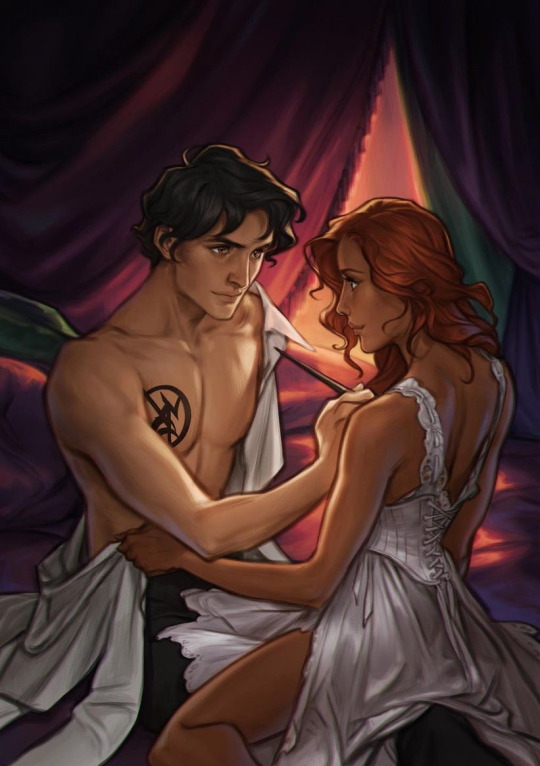
The art is lovely and now I'm gonna ramble because that's what I do when I care about something.
For the love of women, please PLEASE can fan artists remember to add muscle to their Shadowhunter ladies? I'll commend Bowater for cleverly giving James that sculpted and lean look without making him a beefcake (nothing against beefcakes, I'd love to hug them), but Cordelia is once again suffering from Arms And Shoulders Too Slender It's Hard To Even Imagine Her Picking Up A Sword. There is some there, yes, but artists shouldn't be afraid of giving particularly Female Main Characters weight and toned muscle. Cordelia is supposed to be nearly the same height as James as far as I can remember, and she's curvy, and full, and she wields a sword like it's second nature to her. Please explain why she looks so tiny in James' lap.
Also I'm pretty sure marriage runes are supposed to go over the heart whenever possible (thinking about Will's parabatai rune being over his heart instead -- he didn't get Tessa to draw over the scar, did he??) and... either I'm looking at the picture wrong or James' rune is not over where his heart should be.
For the matter, where are their other runes and scars?? James' Voyance rune isn't even on his hand. And I'm pretty sure he's right handed. I could have that wrong though.
Another thing: no one can ever decide what Cordelia's hair looks like and it's the funniest thing to me. This is what happens when all you do is vaguely say the colour is like fire but also like rose petals but also a flowing river of those things but also is Red (probably for redhead, but then from there I never understand where the rose petal analogy comes from considering the typical rose is a deep bloody colour -- I do acknowledge the existence of those light orange varieties though which might more closely resemble red hair). In the end, I'm glad readers can infer what they want and imagine the characters how they like.
Anyone else think James looks like he's built like a tennis player? Oddly specific, maybe, but it was a thought I had. Mostly the arms and somewhat narrow body.
James' hair is nice, his eyes are an interesting take on gold in the shadows. Bowater managed to also make him look closely related to his father, so bravo for that.
In the end, the focus is obviously on the marriage runes and not other physical aspects outside of it being clear that this is James and Cordelia. Bowater's style is very beautiful and elegant. Love the way fabric and lighting is done too. I'll add also that it is possible to be a smaller person who is slender but still strong so I mean Cordelia's not necessarily done wrong, I just interpret her appearance differently. Obviously, they're both hot and they're both attractive and I have my qualms with the series, chronicles, and author -- the fandom I am so-so on, though I'm still here, aren't I? And I'm taking the time to ramble about my thoughts on a piece of fanart -- but this is good. Gorgeous, even. Both James and Cordelia are beautiful.
#side note: am I the only one who thought cc made a mistake trying to describe james as handsome in cordelia's eyes#as opposed to matthew being the beautiful one#when there has always been a deep and aching strange beauty to james??#james herondale#cordelia carstairs#vaguely crediting charlie bowater though it isn't like you can't find a dozen more copies of this with the credit#also yes I mercilessly picked this apart because I am still trying to find avenues to express my dissatisfaction with tlh#I search for flaws what else can I say#I am aware of it but it's hard to turn those thoughts processes off#maybe I'll write a post at some point all about the authors I once Loved that I am now deeply critical of#a lot of people would hate me for it but eh#also we all know about the marvelisation of cinema#but is it time to talk about the marvelisation of book series/worlds?#or perhaps it has a better and more book-focused name? the jkr approach? rick riordan's marvel-esque flaw? the sjm plague? the clare affair?#we'll workshop it#maybe it's the curse of middleschool-YA series and the issue of aginh readers in fandoms#and I don't mean this as discriminatory against anyone older in fandom because there is not really a limit nor should there be#for most media#but the issue of when the readers grow up amd authors try to accomodate for that -- not necessarily by making their work more adult --#but by making MORE because there is also an influx of new fans and they want to stay relevant while retaining the old#it's a whole thing though I'd need to sit down to properly organise my thoughts to talk about it
47 notes
·
View notes
Text

was reading my first ever MDZS fic and pfft.
#four idiots canon divergence au#mdzs#grandmaster of demonic cultivation#mo dao zu shi#wei wuxian#nie huiasang#The first chapter does have issues. Mostly because it was also my first writing for any Chinese media/this genre in general#but this fic has a special spot in my heart as well#kk's writing tag#I am mostly a comedy writer when it comes to this fandom (four idiots series for both AUs) and this is one of the fics I completed after#years of writer's block and struggling with other fics. And it had everything I personally wanted to write. Comedy friendship and ghosts#(surprise hua cheng appearance with the whole city of ghosts and gambling in the middle)#the plot elements are very randomly thrown together but I do think that this helped me realize that my writing strength was in the#characterisation over the world building and like. Mystery writing.#I usually wrote rarepair ships before so to come into a mainstream pairing and fandom was....new. It's still strange but it's what it is#thank you to everyone who has ever interacted with my fics
30 notes
·
View notes
Text
Any other Canadians lmao’d when they heard Kirk say "it appears we are in mid-21st century New York City" just for La’an to be like "uh no… this is Toronto". Really refreshing for once to see Toronto not as a stand-in for NYC as is mostly the case in filming
#star trek#strange new worlds#snw#for once Toronto isn’t a stand-in for NYC#literally the case for so many pieces of media#btw that can’t be the first non-American time travel episode right?#seriously none other come to mind so please refresh my memory if I am wrong#TORONTOOOOOO
75 notes
·
View notes
Note
Hi, I enjoy your art a lot.
I used to make art but I've not been able to recently.
Is there anything that inspires you a lot? Or makes you feel the I want to draw/make this feeling?
Thank you in advance 🩷
hi! I was thinking over your message this week because this is something i struggle with a lot, so various media/things have worked at various times, but here are some things that have given me this feeling in the past:
movies/tv: - kingdom of dreams and madness, song of the sea, from up on poppy hill, grand budapest hotel, phantom thread, the night is short walk on girl, urasawa naoki's manben
books: invisible cities (italo calvino), piranesi (susanna clarke) underland (robert macfarlane).
- skip & loafer, blue period, witch hat atelier
- also various folklore and mythology collections
other: visiting libraries or museums/digital collections online, keeping an eye out for unusual events/shows in your area, lectures/videos & interesting concepts (animals/architecture/culture, whatever), going on walks, & making cursed little crafts.
- recently I got a little handheld microscope and while idk if it really counts as "inspo" it's been really special to be able to look at things up close, and makes you look at your everyday surroundings differently afterwards
I just want to add that it's easy to be stuck in a cycle feeling so unhappy with yourself for being unable to make things like you used to. try not to worry too much, and pursue your interests without pressure of finding inspiration, the drive to create will follow. I hope you will encounter surprising and fun moments that fill you with joy!
#asks#anon#thank you for your message!! hope one of these can be a little helpful for you :^)#SORRY keep trotting out the same 4-5 movies sldkfjsldkfjslf#i just love media that can show you how strange and wonderful different interpretations of this world can be#if anyone has recommendations please feel free to suggest also!!! would love to find new things.......inspo hivemind
27 notes
·
View notes
Text
Something that I find interesting about any kind of algorithm, or lack there of, on social media apps is the way some people now get their news. Like my main used social apps are tumblr, YouTube, and YikYak (this app has a point system for when people find me funny and therefore has a dopamine chokehold on me) and I never have any idea what is happening in the actually news unless I go looking for it.
Like right now on tumblr the popular tags make no immediate sense to me until I dig into what’s happening and look for myself. The tags seem very random, but if you know what’s going on you can see that it’s Palestine, social justice, and human rights because a big political war is going on and something just happened with it. The superbowl and Travis Kelce are trending bc the Super Bowl just happened and Travis Kelce was in it and something just happened. The Deadpool trailer just dropped and people are excited, something is happening with the Sims, and photography is really taking off. I didn’t even know those things were happening.
And if you look at either my for you page, or my following page, I am seeing none of it because my fav bakugou x reader headcannon writer just dropped several posts and I will be devouring it all immediately.
#it’s just strange how information travels now#like if something major used to happen#you’d see it immediately on the news somehow#but now I’m watching Hulu and not seeing any of it#it’s crazy how curated and shaped our individual worlds can be just through the apps and social media we consume#like over the summer I didn’t even know about the one billionaire submarine sinking until a week later when a doctors office had news on#and it reminds me that I need to put effort into hearing about current events because it’s not just handed to me anymore#idk if this makes sense#I’ve been up for a while ngl#palestine#human rights#sims 4#photography#deadpool#bakugou#bakugou x reader#might delete later
13 notes
·
View notes
Text

Watched the Lower Decks x Strange New Worlds crossover episode last night and it was utterly delightful. 🖖 // (my tweet)
#lower decks#strange new worlds#star trek#beckett mariner#brad boimler#tawny newsome#jack quaid#tv#star trek lower decks#star trek strange new worlds#snw#twitter#social media#spock#mariner#boimler#anson mount#christopher pike#ethan peck#paramount+
29 notes
·
View notes
Text
Been thinking very hard about Charly's sacrifice and how that relates to Bury Your Gays. I want to preface everything with YMMV and it's completely valid if you're upset. In my opinion, Charly's death worked.
BYG is a set of tropes: when a characters's death is for shock value with little to no long term impact. Usually their death isn't about them and they have no agency in it, it's purpose is to inflict pain on their love interest (a main character) or to motivate another character, often for only a few episodes, often a straight man. There is also the element of creator bias, when they are aware how much that character/that relationship means to the audience and either ignorantly or maliciously choose to inflict the pain of killing them anyway. Arrow, The 100, Person of Interest, ST: Discovery, Supernatural and Killing Eve are the ones I'm most familiar with, but there are hundreds of others. Charly's death fits none of those criteria.
Charly had agency in her sacrifice. It wasn't a stray bullet, it wasn't pointless; she saved the galaxy and prevented genocide. Her decision was a reflection of her devotion to the ideals of the Union, even if she felt conflicted. The belief that all life has value, that even if it's your enemy and you have every reason to hate them, *genocide is always wrong*. That's what Charly decided. That was her story and her choice, no one else's. Consequently her actions have changed the course of the entire central storyline for the show. Her sacrifice *mattered*.
Contrast that with the Orville's Thursday counterpart, Strange New Worlds, which also killed a minority character in episode 9. It was pointless and he had no agency in it. A shock value death after the stakes of the episode had already resolved. It added nothing to the episode or the overall narrative. He wasn't even mentioned in the subsequent finale; he was disposable. In a lackluster and rushed funeral scene he got a short by the numbers speech about how he helped Uhura find herself, because his death wasn't about him.
Or go back a few years to another Trek when Discovery killed Hugh at the height of BYGs. Another pointless, shock value death that accomplished nothing except making Paul miserable.
The Orville has built up to this moment for three seasons. The episode was a culmination of every major storyline for the show, and the paradigm of the story has permanently changed because of Charly's actions. It's a tricky business killing any character in your story. It has to feel both too soon and inevitable, and making sure it matters to the narrative is something the majority of shows fail to do. This counts ten fold for queer characters. The Orville is a rare example that has met that threshold for me. To write off Charly's sacrifice as BYG is to imply that it didn't matter, and it did.
#BYG is still a very big issue in media right now#but it's rectangles and squares#not every queer death falls into those tropes and if we say they do then it loses all meaning#overall I don't think we're at a point where queer characters should be killed#but I think it's important to recognize the difference between when it's done well and when it's not#anyway that's my two cents#the orville#the orville new horizons#the orville: new horizons#the orville spoilers#star trek: strange new worlds spoilers#the orville 3x09#charly burke#my angry lesbian saved the world
201 notes
·
View notes
Text








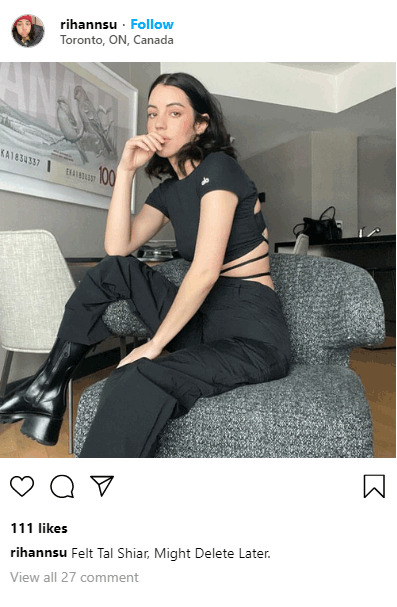
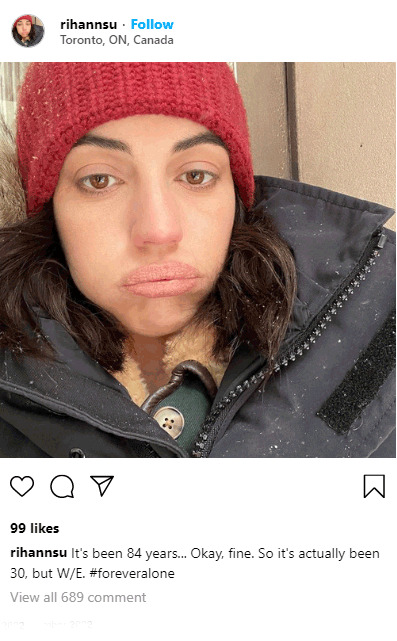

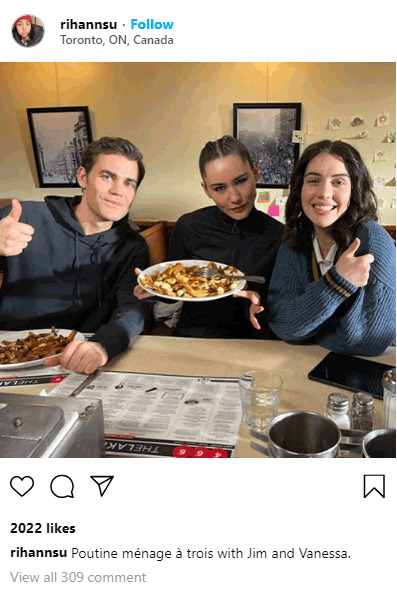
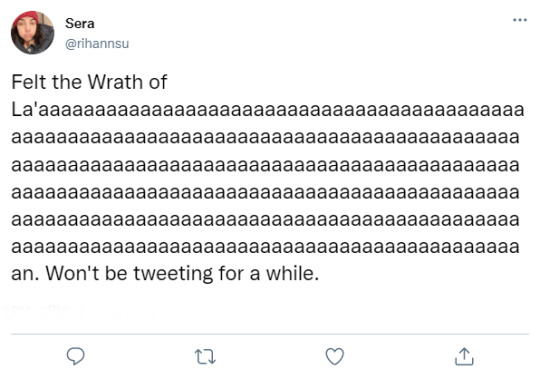
Sera of Romulus: #MemeQueen
#*#sera#sera of romulus#adelaide kane#star trek#star trek: strange new worlds#21st century social media influencer sera and sad pathetic unhinged conspiracy theorist sera are the funniest covers she#could have possibly chosen for this timeline#she's such a trololololololol#snw#star trek: snw#paul wesley#christina chong#please can we get her back on this show?#chrissy especially was all for it on twitter and insta#romulan#the romulan star empire#adelaidekaneedit#startrekedit#snwedit#seraedit
12 notes
·
View notes
Text
Angry rant moment
MIX AUDIO BETTER
I just had to abandon an episode of a show I really want to watch because the mixing was so bad. There's a sound in-universe that fucks things up, and it's present in the realm of the show, as a high-toned ring/buzz thing
it HURT to listen to because to have the audio high enough to hear the characters talking, that sound is like... 2-3x louder than them! IT HURTS!
Mix your goddam audio better FFS
#Strange New Worlds#star trek#audio#tinnitus#my ears are still fucking buzzing and I have a headache thank you#couldn't finish it#absolutely nauseating sound#FIX YOUR SHIT AUDIO MIXING#if the editing/sound guys aren't striking... strike too#get all media back to proper levels.
19 notes
·
View notes
Text
SNW has done it again: a subspace anomaly that means everyone has to confess their emotional issues via song is such a wonderful fanfiction premise
#star trek#star trek strange new worlds#snw#fanfiction is not necessarily what I want out of my non-fan media#but sometimes it can work#and it's working here so far
14 notes
·
View notes
Text
I keep seeing ppl say that Melissa Navia asked for less screen time in S2 due to the loss of her partner. I think this is raw bullshit, but if you have a source pls lmk. I am interested.
I do know she got a few extra days off to spend his bday in Ireland with his family - she said this in an interview somewhere early on. She gave no indication that there were any script changes, just some small adjustments to the shooting schedule.
I do know that Anson Mount asked for time to spend with his new baby, which directly resulted in E2 being shot first, and may - I don't remember if it was said or merely extrapolated - be the reason his parts in E1-2 are small. I can't remember who or where (I think an early Ready Room?) but someone explicitly said it, and he later expressed gratitude.
I have seen or heard nothing of the like regarding Melissa Navia.
#star trek#strange new worlds#erica ortegas#melissa navia#I don't need hard proof just something more than randos posting on social media
4 notes
·
View notes
Text
Also this is really petty/nitpicky since I know they got rid of it for some of the movies, but I want Geordi’s VISOR back. I don’t want people (writers or audiences) to gloss over the fact that Geordi is canonically disabled and uses assistive technology.
#it’s about me as a disabled person lamenting how sparse representation is for us in the first place#and the trend of people doing everything they can to handwave it away#especially considering what they just did to hemmer on strange new worlds#I should start a tag for my star trek thoughts#star trek#star trek picard#geordi laforge#disability in media#star trek crit
64 notes
·
View notes
Text
ok gonna be that guy for a minute here but uhhh im a little tired of blink-and-you’ll miss it representation. if you were happy to catch that chapel is bi then that’s great and you’re completely within your right to enjoy that but it honest to god felt like they were trying to get lgbt brownie points given how quick the mention was. i want to give the writers the benefit of the doubt and trust they’ll explore her bisexuality later in the show but im so used to characters who are introduced as queer via a passing reference and then never having that part of their identity touched upon again. so yeah idk not to be bitter and tired during pride month but here we are
#once again if you’re happy im genuinely glad you find comfort and love in that revelation#but like the only reason i picked up on it at all was because other people were talking about it on social media first#i just feel like star trek prides itself so heavily on the motto of infinite diversity in infinite combinations#but is so scared to actually explore what that means within the context of their shows#sorry going to sleep soon#snw#strange new worlds#strange new worlds spoilers
92 notes
·
View notes